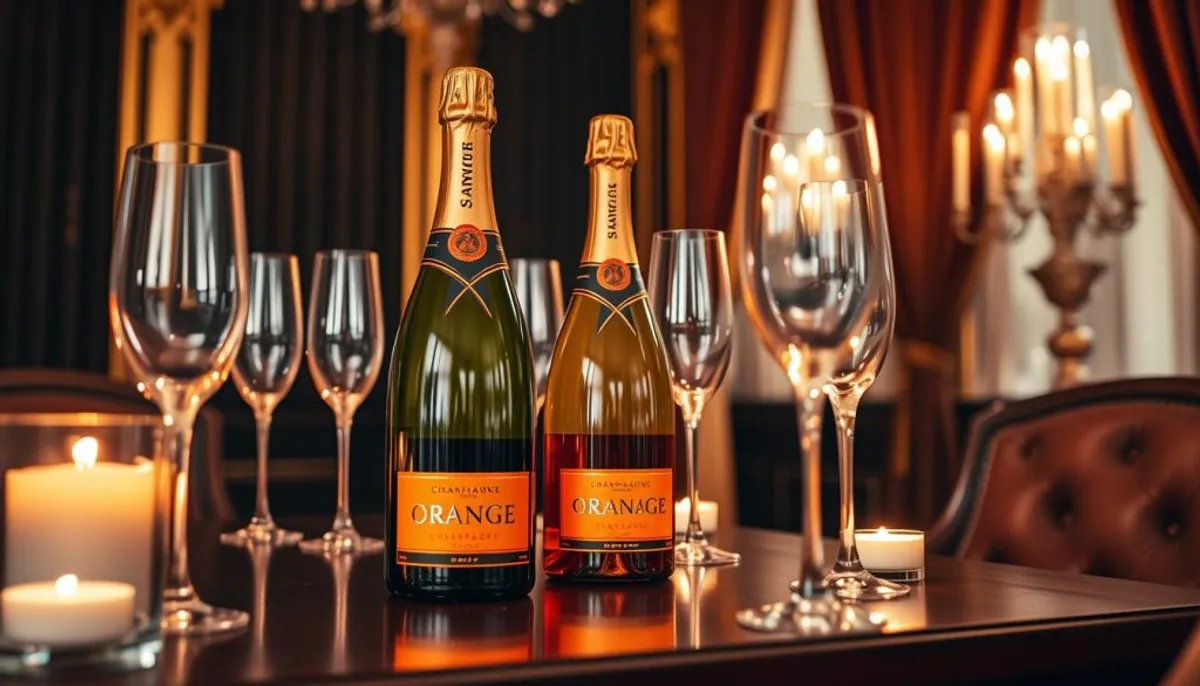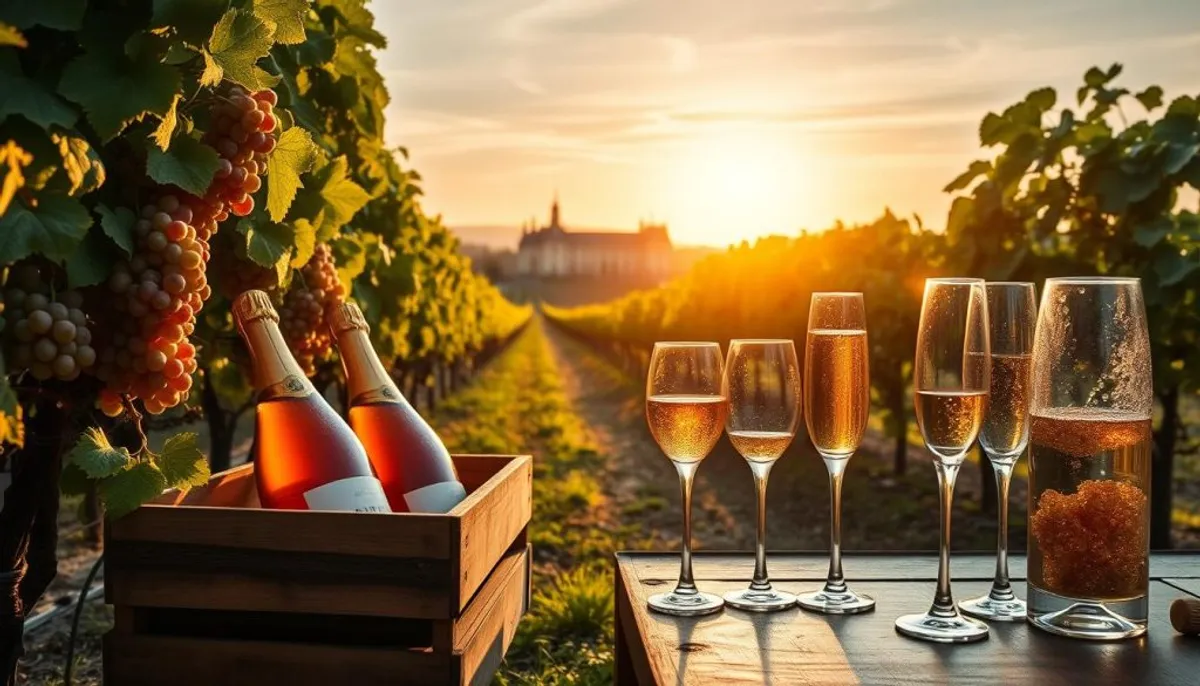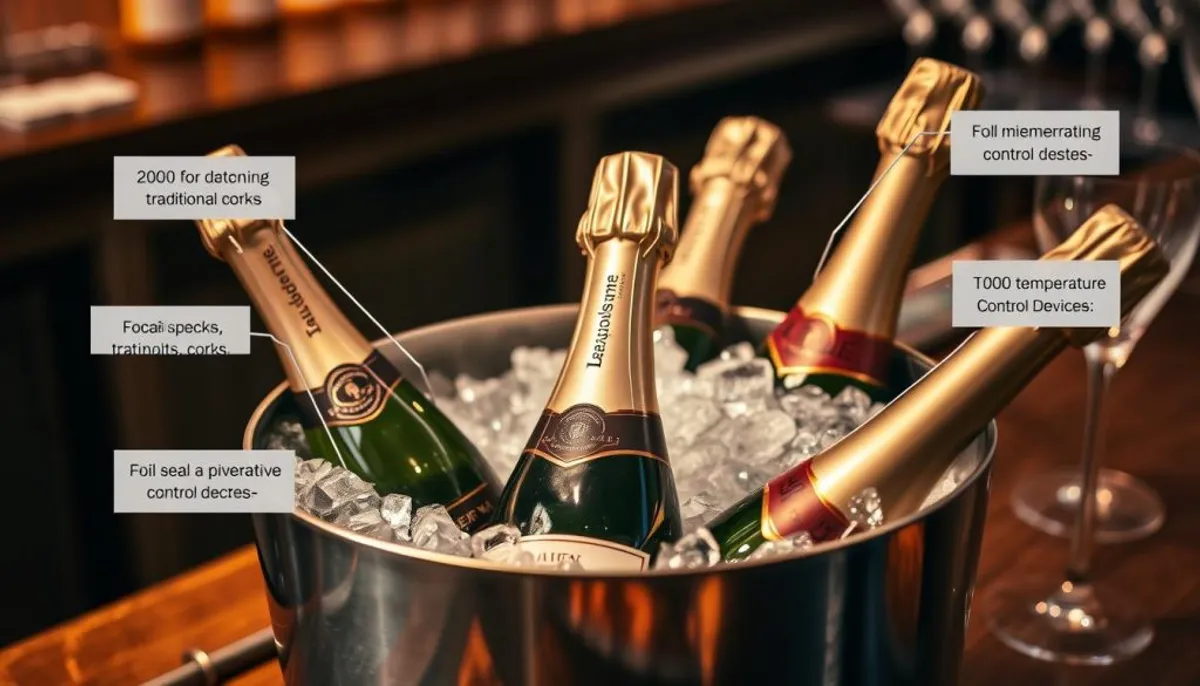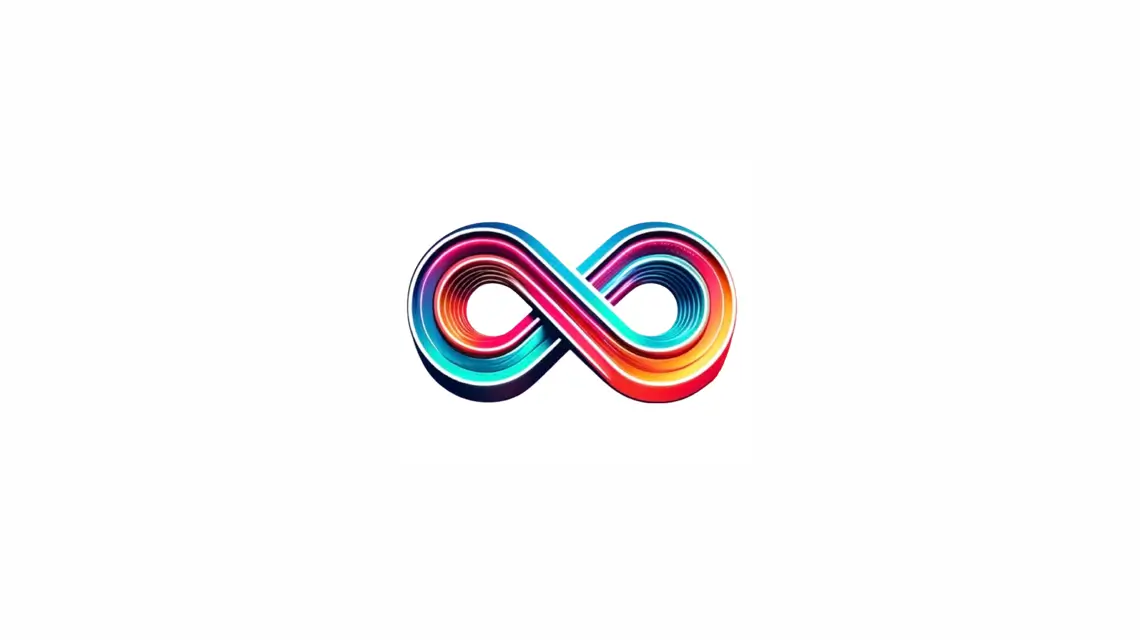Welcome to the realm of orange label champagne, a quintessence of luxury and festivity. This French wine has enthralled connoisseurs for ages with its effervescent bubbles and storied past. We will traverse the vineyards of Champagne to your glass, unveiling the essence of this celebratory elixir.
Orange label champagne originates from a meticulously defined area in France. It transcends mere sparkling wine, embodying a prestigious drink crafted with meticulous attention and tradition. The terroir of Reims and Epernay imbues these wines with their unique essence.

We will explore the pivotal grape varieties that conjure the magic in your glass. You will gain insight into the meticulous process that transforms still wine into a fizzy delight. This guide is designed to deepen your appreciation, whether you are an aficionado or a newcomer to the world of luxury champagne.
Key Takeaways
- Orange label champagne is exclusively from the Champagne region in France
- The unique terroir of Reims and Epernay influences champagne’s character
- Key grape varieties include Chardonnay, Pinot Noir, and Pinot Meunier
- “Brut” indicates a dry champagne, while “extra dry” is slightly sweet
- Serve champagne cold (40-50°F) for the best bubbles
- Vintage champagnes are made from grapes harvested in a single exceptional year
- Non-vintage champagnes blend wines from different years and vineyards
Understanding the Champagne Region and Its Heritage
The Champagne region of France is a paragon of winemaking prowess. It is a celebrated French wine region, distinguished by its storied heritage and stringent regulations, including kosher wine certification. These factors collectively contribute to the creation of its globally acclaimed sparkling wine.
The Legendary Terroir of Reims and Epernay
In Champagne, the terroir of Reims and Epernay is pivotal in crafting wines of exceptional quality. The region’s characteristic chalky soil imbues the grapes with a distinct minerality. This, combined with the cool climate, fosters an environment conducive to producing wines known for their crispness and elegance.
Historical Significance of Champagne Production
Champagne’s winemaking history is as vibrant as the wine itself. For centuries, monks have been instrumental in shaping the winemaking practices still employed today. The Champagne AOC designation, introduced in 1936, guarantees that only wines from this specific region can be labeled as Champagne.
Climate and Geographical Influence
The cool climate of Champagne is essential for its wine production. It facilitates slow grape ripening, which preserves acidity and enhances flavor complexity. The region’s latitude and chalky soil create a singular environment, contributing to the wine’s unique taste.
| Champagne Facts | Details |
|---|---|
| Legal Requirement | 100% production from Champagne region |
| Main Grape Varieties | Chardonnay, Pinot Noir, Pinot Meunier |
| Optimal Tasting Temperature | 8 to 10 degrees Celsius |
| Quality Indicators | Grand Cru, Premier Cru |
Essential Champagne Grape Varieties
Champagne’s distinct flavor profile is a result of its blend of carefully chosen grapes. The region’s vineyards are home to three primary varieties. These varieties are the foundation of this esteemed sparkling wine.
Chardonnay: The Elegant Base
Chardonnay makes up 28% of Champagne’s vineyards, flourishing in areas like Avize and Le Mesnil-sur-Oger. It contributes elegance and finesse to the blend, serving as the base for blanc de blancs. These wines are celebrated for their crisp acidity and subtle floral notes.
Pinot Noir: Structure and Complexity
Pinot Noir is the dominant grape in Champagne, covering 38% of the vineyards. It thrives in regions such as Montagne de Reims and Côte des Bar. This red grape brings structure and complexity to the blend, enriching the character of blanc de noirs champagnes. Pinot Noir introduces red fruit flavors and a robust character to the wine.
Pinot Meunier: Adding Softness and Fruit
Pinot Meunier constitutes 34% of Champagne’s vineyards, mainly found in the Marne Valley. It contributes softness and fruitiness to the blend, balancing the other varieties. This grape variety enhances the wine’s approachability and early-drinking appeal.
| Grape Variety | Vineyard Coverage | Key Characteristics |
|---|---|---|
| Chardonnay | 28% | Elegance, finesse, crisp acidity |
| Pinot Noir | 38% | Structure, complexity, red fruit flavors |
| Pinot Meunier | 34% | Softness, fruitiness, approachability |
The art of champagne making is rooted in the blend of these varieties. Over 90% of champagnes are blended cuvées. This blending combines the strengths of each grape, creating a harmonious and complex wine. Whether it’s a blanc de blancs, blanc de noirs, or a traditional blend, each style showcases the unique qualities of these essential grape varieties.
The Art of Orange Label Champagne Production
Orange label champagne production is a meticulous process that blends tradition with innovation. The méthode champenoise, also known as the traditional method, forms the backbone of this exquisite craft. This time-honored technique involves a series of carefully orchestrated steps that transform humble grapes into the world’s most celebrated sparkling wine.
The journey begins with hand harvesting, ensuring only the finest grapes make it into the blend. Gentle pressing follows, extracting the juice while preserving its delicate flavors. Primary fermentation then occurs, converting grape sugars into alcohol and creating a still base wine. To maintain the quality and taste of the final product, various champagne preservation techniques are employed throughout the process.

The magic truly begins with secondary fermentation. Winemakers add a mixture of sugar and yeast to the base wine, then bottle it. This triggers a second fermentation inside the bottle, producing the signature bubbles and complex flavors champagne is known for. The bottles then undergo riddling, a process perfected by Veuve Clicquot in the 19th century, which consolidates yeast sediment for easy removal. To maintain the quality and flavor of champagne, various champagne preservation techniques are employed, ensuring that every sip remains as delightful as intended.
| Production Step | Purpose | Duration |
|---|---|---|
| Hand Harvesting | Select best quality grapes | 1-2 weeks |
| Primary Fermentation | Create base wine | 1-2 weeks |
| Secondary Fermentation | Develop bubbles and complexity | At least 15 months |
| Riddling | Consolidate yeast sediment | 6-8 weeks |
This intricate process, refined over centuries, results in the luxurious champagne we enjoy today. From Veuve Clicquot’s innovative riddling technique to the precise sugar dosage in each bottle, every step contributes to the unique character of orange label champagne.
Champagne Classifications and Styles
Champagne presents a spectrum of styles, each with distinct attributes. From the everyday non-vintage blends to the rare vintage releases, the champagne universe is a tapestry of diversity.
Non-Vintage vs. Vintage Champagnes
Non-vintage champagnes are crafted from a blend of wines from various years, ensuring a consistent taste profile. These champagnes constitute 95% of the total production. In contrast, vintage champagnes are produced from grapes harvested in a single year, requiring a minimum of 3 years of aging. Dom Perignon and Louis Roederer Cristal stand out as premier examples of vintage champagnes.
Prestige Cuvées and Special Releases
Prestige cuvées embody the pinnacle of a champagne house’s craftsmanship. Armand de Brignac Ace of Spades Brut Gold, crowned the world’s best in 2010, exemplifies this category. Some producers also create special editions for connoisseurs, highlighting rare blends and unparalleled quality.
Understanding Sweetness Levels
The spectrum of champagne sweetness spans from the dry to the dessert-like, influenced by the dosage, or added sugar. Brut, the most sought-after style, typically contains less than 12 grams of sugar per liter.
| Style | Sugar Content (g/L) |
|---|---|
| Brut Nature | 0-3 |
| Extra Brut | 0-6 |
| Brut | <12 |
| Extra Dry | 12-17 |
| Sec | 17-32 |
| Demi-Sec | 32-50 |
| Doux | >50 |
Expert Guide to Champagne Tasting
Champagne tasting is an art that engages all your senses. Let’s explore the key aspects of this delightful experience.
Visual Assessment Techniques
Begin by examining the champagne’s appearance. Look for clarity, color, and effervescence. A quality champagne should have fine, persistent bubbles. The color can range from pale gold to deep amber, depending on the grape varieties used.
Aroma and Bouquet Analysis
Next, focus on the champagne’s aroma. Swirl the glass gently to release the bouquet. Use a wine aroma wheel to identify scents like citrus, green apple, or toasty notes. Remember, champagne’s flavor profile is complex and can change as it warms in the glass.
Palate Evaluation Methods
Take a small sip and let it coat your palate. Notice the balance between acidity, sweetness, and alcohol. Champagne’s alcohol content typically ranges from 12% to 12.5%. Pay attention to the texture and the lingering finish.
| Sweetness Level | Sugar Content (g/L) |
|---|---|
| Brut Nature | 0-3 |
| Extra Brut | 0-6 |
| Brut | 0-12 |
| Extra Dry | 12-17 |
| Sec | 17-32 |
| Demi-Sec | 32-50 |
| Doux | 50+ |
Practice these techniques with different champagne styles to refine your tasting skills. From budget-friendly options like Veuve Monsigny (£14.99) to prestigious cuvées like Veuve Clicquot Ponsardin Brut NV (£54.99), each bottle offers a unique tasting experience.
Storage and Serving Recommendations

Ensuring champagne’s quality is paramount for a delightful experience. For brief storage, maintain bottles at 8-10°C for 3-4 days or at room temperature for up to a month. For extended periods, a cool, dark, and humid environment with a constant temperature of 10-13°C is essential.
Storing champagne sideways in a wine rack or cellar is vital. It prevents the cork from drying out, crucial for vintage champagnes that can age gracefully for 5-10 years. Non-vintage blends typically last 3-4 years. Opting for magnum-sized bottles facilitates slower, more even maturation.
When serving, the ideal temperature is critical. Chill your champagne to about 7-9°C before pouring. Utilize tall, narrow champagne flutes to preserve bubbles and enhance aromas. These glasses concentrate the wine’s effervescence and delicate bouquet.
| Storage Type | Temperature | Duration |
|---|---|---|
| Short-term (refrigerated) | 8-10°C | 3-4 days |
| Short-term (room temp) | 20-22°C | Up to 1 month |
| Long-term | 10-13°C | 3-10+ years |
Food Pairing with Champagne
Champagne and food pairing transcends mere culinary practice, becoming an art form that elevates dining to new heights. It spans from timeless classics to cutting-edge gourmet pairings, showcasing champagne’s unparalleled versatility across diverse culinary landscapes. This exploration aims to guide you in crafting the ideal pairings for your most cherished celebration meals.
Classic Champagne Pairings
Traditional pairings underscore champagne’s signature crisp acidity and effervescence. Fish dishes, with their rich sauces, are beautifully complemented by champagne’s bubbly essence. Pâté, whether crafted from chicken liver or duck, finds a perfect match in sec champagne. For an indulgent experience, consider pairing duck with blackberry sauce alongside your preferred champagne.
Modern Pairing Innovations
Contemporary culinary innovators are redefining champagne pairings. Cava, aged for three years, brings forth apple and hazelnut notes that harmonize with Spanish tapas. Gruet sparkling wine, crafted from high-altitude Pinot Noir grapes, pairs exquisitely with New Mexican cuisine.
Special Occasion Recommendations
For those special occasions, consider these gourmet pairings:
- Oysters with Brut champagne
- Cream cheese-based appetizers
- Tiramisu with champagne for dessert
- A cheese course featuring sec champagne
| Champagne Style | Food Pairing | Flavor Notes |
|---|---|---|
| Brut | Seafood | Crisp, dry |
| Sec | Cheese, Pâté | Slightly sweet |
| Demi-Sec | Desserts | Sweet, fruity |
| Cava | Tapas | Apple, hazelnut |
Investment and Collecting Champagne
Champagne has emerged as a coveted choice for wine collectors and investors. The market for fine champagnes has witnessed substantial growth. Prices for these premium wines have remained relatively stable, making them an attractive investment.
Aging Potential and Value Assessment
Prestige cuvées such as Krug’s Clos du Mesnil, Louis Roederer’s Cristal, and Dom Pérignon are highly coveted by collectors. These champagnes are renowned for their aging potential, with complex flavors developing over time. For instance, Dom Pérignon Vintage 2002 Plénitude P2, aged for 15 years on the lees, significantly enhances its value and taste.
Market Trends and Pricing
Champagne auctions have yielded impressive results. In June 2018, four bottles of Dom Pérignon Rosé 1982 sold for $2,899 at Christie’s London. The market has shown a significant appreciation for certain vintages. For example, between November 2021 and April 2023, the 1993 Dom Perignon P2 Plenitude Brut saw a remarkable 1,308% price increase, from $346 to $4,870.
Building a Champagne Collection
When curating a champagne collection, focus on prestigious houses and exceptional vintages. Acquiring bottles like Pol Roger 2008 Cuvée Sir Winston Churchill Brut or Salon 2007 Le Mesnil Blanc de Blancs Brut is advisable. These champagnes are known for their richness, longevity, and potential for appreciation. Proper storage is crucial to maintain the collection’s value and quality over time.
| Champagne | Price Range | Investment Potential |
|---|---|---|
| Dom Pérignon Vintage | $250+ | High |
| Dom Pérignon Rosé | $460+ | Very High |
| P3 Plenitude Brut Rose | $5600+ | Exceptional |
Conclusion
The realm of orange label champagne presents a luxury experience, steeped in history and intricately crafted. Veuve Clicquot’s Yellow Label exemplifies this, with a blend of 50% Pinot Noir, 20% Pinot Meunier, and 30% Chardonnay. This champagne, adorned with a vibrant yellow label patented in 1877, encapsulates centuries of innovation and tradition.
Champagne appreciation transcends the mere act of consumption. The art of blending, as demonstrated by Veuve Clicquot’s inclusion of 25-40% reserve wines, adds depth and consistency. Wine education underscores the significance of serving temperature, around 10°C (50°F) for Veuve Clicquot, and proper storage for optimal enjoyment.
From its inception in 1772 to its current production of 22 million bottles annually, Veuve Clicquot embodies champagne’s timeless allure. Whether indulging in a glass priced at $50-$60 or exploring vintage variations, each sip is a journey through time and terroir. As you explore the world of champagne, you’ll uncover a beverage that transcends mere celebration, becoming a subject of fascination and refinement.
RelatedRelated articles



